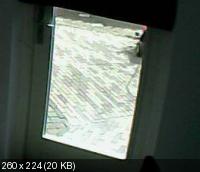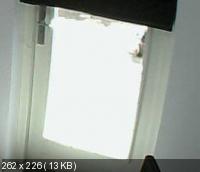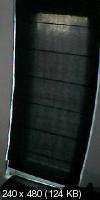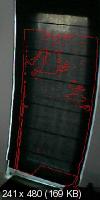Alarms on cloudy days
-
sjthespian
- Posts: 5
- Joined: Tue Nov 13, 2012 11:20 pm
Alarms on cloudy days
I am getting quite a few alarms on days with mixed clouds and sun as the sun drops behind a cloud and then comes back out. I have tried quite a bit of tuning for the zones, but haven't come up with a magic set of settings that will catch people in the frames but eliminate most (if not all) of the events where it is just the overall light level in the image changing or sharp shadow edges becoming soft and then sharpening back up again.
Does anyone have any tips for handling this?
Does anyone have any tips for handling this?
Re: Alarms on cloudy days
Overload Frame Ignore Count set to 4 or more will end this nonsense
Re: Alarms on cloudy days
Sun coming in and out of clouds has been annoying me a lot recently! I shall try this setting tonight
Re: Alarms on cloudy days
Me too, however, selecting this option spams the hell out of the log, multiple times a second ...frankster wrote:Sun coming in and out of clouds has been annoying me a lot recently! I shall try this setting tonight
Apr 17 23:41:55 perkin zma_m7[707]: INF [In overload mode, 2 frames of 2 remaining]
Apr 17 23:41:55 perkin zma_m7[707]: INF [In overload mode, 1 frames of 2 remaining]
Apr 17 23:41:55 perkin zma_m7[707]: INF [In overload mode, 2 frames of 2 remaining]
And that's on just one problem camera, and at night (dark)!
Is there any quick way to have that feature but NOT the excessive logging? I know ZM is quite chatty in the log files, but really ...
Re: Alarms on cloudy days
You can try playing with Reference Image Blend %ge value but keep in mind that all events are affected
Re: Alarms on cloudy days
Same problem for me. Namely for these two images the event was triggered:frankster wrote:Sun coming in and out of clouds has been annoying me a lot recently! I shall try this setting tonight


First I tried to play with presets in filter, but I found out that initial values are not a part of any preset. As many parameters are now changed, I can't say which of them will affect the result. How to reset to initial values (those set when monitor was created)?
It looks like "Overload Frame Ignore Count" is not part of documentation. What does this parameter means / how does it work?
Re: Alarms on cloudy days
It specifies how many alarm frames to ignore in a row before going into alarm state and recording.
Re: Alarms on cloudy days
Hmm, this sounds like something that I would like to test. I'm running v1.25.0, maybe I'm blind or silly, but I do not see this option under either the monitor settings or the global options. Where does Overload Frame Ignore Count live? Thanks.bb99 wrote:Overload Frame Ignore Count set to 4 or more will end this nonsense
--Larry
Re: Alarms on cloudy days
Got it, thanks!!
--Larry
--Larry
Re: Alarms on cloudy days
What is the difference between the parameter Overload Frame Ignore Count (zone setting) and Alarm Frame Count (monitor setting)? What values can you recommend?bb99 wrote:It specifies how many alarm frames to ignore in a row before going into alarm state and recording.
Re: Alarms on cloudy days
Overload Frame Ignore Count ignores only extreme changes in frames and normal alarm frames are unaffected. Alarm Frame Count is a setting that dictates how many alarm frames in a row must occur before triggering an event.
Overload Frame Ignore Count - I usually start with a value of 4 for outside monitors, 0 for inside
Alarm Frame Count - I usually start with a value of 2 for inside and outside
The above values are for 10 fps monitors.
Overload Frame Ignore Count - I usually start with a value of 4 for outside monitors, 0 for inside
Alarm Frame Count - I usually start with a value of 2 for inside and outside
The above values are for 10 fps monitors.
Re: Alarms on cloudy days
yes! I've been looking for this solution for weeks - how to filter out all those useless 1 and 2 alarm events. Thanks.
Re: Alarms on cloudy days
In my case FPS varies from 11.8 to 13.1 (the value was taken from "Watch" view). I have set Overload Frame Ignore Count to value 6 and I have event with this sequence of frames:bb99 wrote:Overload Frame Ignore Count - I usually start with a value of 4 for outside monitors, 0 for inside
Alarm Frame Count - I usually start with a value of 2 for inside and outside
The above values are for 10 fps monitors.
Code: Select all
Frame Id Type Time Stamp Time Delta Score
10 Normal 19:26:45 0.78 0
11 Alarm 19:26:45 0.86 25
12 Alarm 19:26:45 0.93 23
13 Alarm 19:26:45 1.00 21
14 Alarm 19:26:45 1.08 17
15 Normal 19:26:45 1.18 0


First of all, I don't see any change or movement between F10 and F11 at least in the area surrounded by red. Maybe it became slightly lighter due to the sun...
Second, there are 4 frames with extreme changes, but my setting is 6 frames. Still the alarm is triggered. What do I do wrong? Scores are high, as high as for real movement:
Code: Select all
TotalScore Avg. Score Max. Score
86 21 25
Re: Alarms on cloudy days
Try changing alarm frame count to value of 6 also. There is another setting that figures into this:Reference Image Blend %ge on the general tab.
From the wiki:Reference Image Blend %ge
Each analysed image in ZoneMinder is a composite of previous images and is formed by applying the current image as a certain percentage of the previous reference image. Thus, if we entered the value of 10 here, each image’s part in the reference image will diminish by a factor of 0.9 each time round. So a typical reference image will be 10% the previous image, 9% the one before that and then 8.1%, 7.2%, 6.5% and so on of the rest of the way. An image will effectively vanish around 25 images later than when it was added. This blend value is what is specified here and if higher will make slower progressing events less detectable as the reference image would change more quickly. Similarly events will be deemed to be over much sooner as the reference image adapts to the new images more quickly. In signal processing terms the higher this value the steeper the event attack and decay of the signal. It depends on your particular requirements what the appropriate value would be for you but start with 10 here and adjust it (usually down) later if necessary.
Usually I see a value of 7 here but I've had to adjust upward on outdoor monitors. I have one set to 15 but keep in mind ZM is a game of trade offs; uping the alarm count will make you miss anything under 1/2 sec. and changing the % blend tends to affect motion detection.
From the wiki:Reference Image Blend %ge
Each analysed image in ZoneMinder is a composite of previous images and is formed by applying the current image as a certain percentage of the previous reference image. Thus, if we entered the value of 10 here, each image’s part in the reference image will diminish by a factor of 0.9 each time round. So a typical reference image will be 10% the previous image, 9% the one before that and then 8.1%, 7.2%, 6.5% and so on of the rest of the way. An image will effectively vanish around 25 images later than when it was added. This blend value is what is specified here and if higher will make slower progressing events less detectable as the reference image would change more quickly. Similarly events will be deemed to be over much sooner as the reference image adapts to the new images more quickly. In signal processing terms the higher this value the steeper the event attack and decay of the signal. It depends on your particular requirements what the appropriate value would be for you but start with 10 here and adjust it (usually down) later if necessary.
Usually I see a value of 7 here but I've had to adjust upward on outdoor monitors. I have one set to 15 but keep in mind ZM is a game of trade offs; uping the alarm count will make you miss anything under 1/2 sec. and changing the % blend tends to affect motion detection.